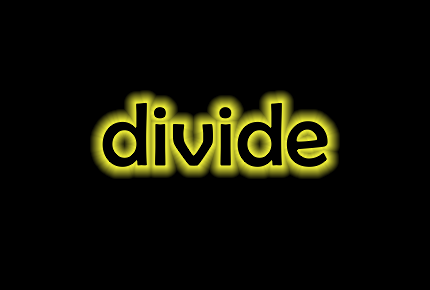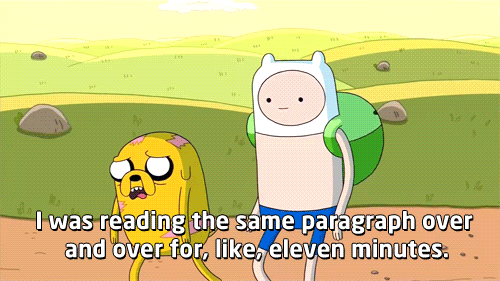 Ummm….no. This page offers more topic-specific or in-depth resources for teachers of beginning ELs. Typically, I gather or create resources in response to mainstream teachers’ requests. If you have a specific area you would like me to research, please feel free to contact me here or at gingerjantz@hotmail.com . As time allows, I will be glad to try to address your concern.
Ummm….no. This page offers more topic-specific or in-depth resources for teachers of beginning ELs. Typically, I gather or create resources in response to mainstream teachers’ requests. If you have a specific area you would like me to research, please feel free to contact me here or at gingerjantz@hotmail.com . As time allows, I will be glad to try to address your concern.
 USING COMPUTERS IN INSTRUCTION
USING COMPUTERS IN INSTRUCTION
If you routinely use computers as part of your instructional strategy, please consider that many- perhaps most- newcomers have never been exposed to this type of technology. They will not understand even the most basic commands, e.g. “Open a new tab.” In order to acquaint them with the language of technological instruction, you may want to assign this Symbaloo pathway unit: http://learningpaths.symbaloo.com/ . The student must create a free account, sign in, and enter Access Code 21071. The pathway structure requires the student to complete each assignment in order before proceeding to the next. The last few assignments in this module may require a higher English language proficiency than most newbies have attained, so please monitor learner progress. S/he will have acquired sufficient vocabulary to function successfully in your classroom even if s/he has not completed the last few tiles in the pathway.
This brief Spanish/English glossary might serve as a useful beginning reference for computer- and internet-related words, including verbs: https://spanish.yourdictionary.com/spanish-language/learning-spanish/technology-terms-in-spanish.html.
Beginning ELs must be REQUIRED to keep a translation site open on their computers at all times so that they can easily access it. Most will not do this voluntarily, as they do not want to appear “different”from or less competent than their peers.
Students should NOT set their native language as their default language on their computers. If they never see the English version of text, they will be less motivated to try to learn and understand it. Students can easily hit a button to translate whole webpages or copy and paste content for translation by a variety of sites, but they need to start with and interact with the English version first.
To ensure exposure to both English and their native languages, students can search the internet using https://www.2lingual.com/. Their search results will be presented in two columns, the results in English and their first language, side by side.
For those English learners wishing to pursue a career in STEM, the U.S. government has funded this free, online course in “English for Science, Technology, Engineering, and Mathematics:” https://www.coursera.org/learn/stem.
 ART ACADEMIC VOCABULARY
ART ACADEMIC VOCABULARY
Since most instruction in art classes can be demonstrated nonverbally, ELs typically thrive in these courses. Not only can they achieve success on a par with their English-speaking peers, but the tasks create an opportunity for creative expression and participation that these students cannot yet enjoy in other scholastic settings. Nonetheless, art employs its own unique lexicon. For those teachers whose lessons include art theory or history, the following bilingual English/Spanish art dictionary may prove useful to their students: http://www.hbschool.com/glossary/art_everywhere/final/.
 MATH
MATH
Often the education of immigrant students has not followed the same curriculum of their American-born peers. I STRONGLY recommend that all math teachers assess their newbie students’ foundational skills as soon as those students enter their classrooms. It is not uncommon for ELs’ inability to grasp math instruction to be due to gaps in their educational history as well as unfamiliarity with the language of instruction.
 One free resource for initial math assessment is https://www.khanacademy.org/ . To tease out the influences of language vs. prior knowledge, assign the student the assessment/s via your free English account. Have the student sign up for a free account, too, then show him/her where the assignments are located. The learner can then proceed to the bottom of the page (the footer) and choose one of more than a dozen languages in which to complete the test/s. When s/he is finished, you can view his/her scores and their interpretations in English on your teacher dashboard page. The next step is crucial! If the student demonstrates that s/he needs remedial instruction in order to be able to access what you are currently teaching in class, please assign those lessons on Khan Academy! The student can work on those modules as homework and/or when your in-class instructional tasks are inaccessible to him/her. To expedite learning, allow the student to complete the remedial Khan Academy lessons in his/her native language. Progress in the language of math can proceed in parallel to content acquisition (see previous webpage and below.)
One free resource for initial math assessment is https://www.khanacademy.org/ . To tease out the influences of language vs. prior knowledge, assign the student the assessment/s via your free English account. Have the student sign up for a free account, too, then show him/her where the assignments are located. The learner can then proceed to the bottom of the page (the footer) and choose one of more than a dozen languages in which to complete the test/s. When s/he is finished, you can view his/her scores and their interpretations in English on your teacher dashboard page. The next step is crucial! If the student demonstrates that s/he needs remedial instruction in order to be able to access what you are currently teaching in class, please assign those lessons on Khan Academy! The student can work on those modules as homework and/or when your in-class instructional tasks are inaccessible to him/her. To expedite learning, allow the student to complete the remedial Khan Academy lessons in his/her native language. Progress in the language of math can proceed in parallel to content acquisition (see previous webpage and below.)
 Math Academic Vocabulary
Math Academic Vocabulary
Math is not a universal language.
To ensure that ELs develop the mathematical vocabulary necessary for understanding classroom instruction, teachers may wish to download and print the bilingual glossaries available here: https://steinhardt.nyu.edu/metrocenter/resources/glossaries . Common terms have been translated into 38 different languages! Teachers may punch holes in these pages and offer them to ELs as a reference resource OR may decide to highlight for pre-teaching specific terms used in a lesson. Optimally, ELs should be required to learn the terms PRIOR to the beginning of a unit, recording them in their personal glossaries described on the previous page (https://docs.google.com/document/d/1vTAf4lIHJb5SZI3BJguFXoVSx0RlQb44f8Bb6Nvem0w/edit?usp=sharing) and demonstrating their acquisition via a quiz.
To aid in conceptual understanding, teachers may further wish to direct students to this on-line, multilingual, Middle and High School math dictionary: https://my.hrw.com/math06_07/nsmedia/tools/glossary/msm/glossary.html .
Over 2000 higher level math terms are defined in dozens of languages here: https://www.itseducation.asia/mathematics/.
For younger or less advanced learners, teachers may refer students to this on-line, multilingual, elementary level math dictionary: http://go.hrw.com/math/midma/gradecontent/manipulatives/Glossary/Glossary.html?sz_term=undefined.
For practice at any level, students may choose any subset of these illustrated, on-line math concepts flashcards: https://apps.mathlearningcenter.org/math-vocabulary-cards/.
For classroom display or use as flashcards, here are some illustrated “word wall” definitions of common math terms in English, https://www.graniteschools.org/mathvocabulary/vocabulary-cards/,and Spanish, https://www.graniteschools.org/mathvocabulary/spanish-vocabulary-cards/. Here are the same cards in Russian, http://www.utahrussiandli.org/teacher/?page_id=820, French, https://www.graniteschools.org/mathvocabulary/french-vocabulary-cards/, and Chinese, https://www.graniteschools.org/mathvocabulary/chinese-vocabulary-cards/.
 Multilingual Math Content
Multilingual Math Content
More visual learners may appreciate the simulations illustrating various math concepts embedded in the PHET site: https://phet.colorado.edu/en/simulations/category/math . Click on “Translations” below each simulation to discover which topics have been translated into the fifty available languages.
For additional explanations and examples in Spanish only, teachers may reinforce concepts by assigning topics from the Harcourt on-line school: http://www.hbschool.com/hspmath/na_es/index.html .
Further scaffolding can be derived from the Arkansas Digital Education Portal. This common core based cooperative presents Middle and High School math topics in a truly bilingual English/Spanish format: the concepts are presented visually in English while a Spanish narrator translates. You can find a list of about 30 lessons here: http://neaportal.k12.ar.us/index.php/tag/en-espanol/ .
In possibly the least threatening format imaginable, PBS Kids “Cyberchase” program presents videos and games that explain everything from ratios to tessellations in both English and Spanish: https://pbskids.org/cyberchase/videos .
The National Library for Virtual Manipulatives has translated its materials into Spanish and French: http://nlvm.usu.edu/en/nav/vlibrary.html.
This website from Spain provides a collection of animated videos that mainly teach arithmetic concepts, but offer a few more advanced topics if the user clicks on “Secundaria:” http://www.educa.jcyl.es/primaria/en/temas/matematicas . Students can choose either Spanish or Portuguese presentations.
An entire K-12 math curriculum in Arabic can be found here: https://www.edraak.org/en/k12/ .
 Money
Money
To teach ELs how to use American money, try the leveled activities in this Symbaloo: https://www.symbaloo.com/mix/basicmoneyactivities .
In addition, Sheppard Software makes available a number of exercises related to applying math to money: https://www.sheppardsoftware.com/mathgames/menus/money.htm .
 SCIENCE
SCIENCE
The subject “Science” encompasses a dizzying array of sub-specialties, each requiring its own lexicon to describe the phenomena it studies. In fact, the sciences include more Tier 3 (subject specific) terms than any other course traditionally studied in school. For that reason alone, it is imperative that new ELs begin to acquire the language of science as soon as they matriculate to US schools. Teachers who focus SOLELY on content acquisition via translated or native language materials undermine the possibility of student success in this area. As noted above, all end-of-course exams are in English. Furthermore, the student will be consigned to a second “first year” when s/he proceeds to the next level’s science curriculum.
 Science Academic Vocabulary
Science Academic Vocabulary
Science is rife with opportunities for hands-on experiences. Experiments, field studies, and peer-led investigations provide excellent scaffolding for second language acquisition. In addition, teachers may choose to use the personal glossary/assessment form (https://docs.google.com/document/d/1vTAf4lIHJb5SZI3BJguFXoVSx0RlQb44f8Bb6Nvem0w/edit?usp=sharing) on the previous page to introduce and assess acquisition of unit-specific content vocabulary, preferably before each unit begins.
Printing and punching binder holes in these bilingual glossaries offers learners a tangible and easily accessible resource for study: https://steinhardt.nyu.edu/metrocenter/resources/glossaries . This page lists key terms for elementary through high school science courses, including biology, chemistry, earth science, and physics, translated into 38 languages. Teachers may create their own word banks to incorporate into students’ personal glossaries for each instructional unit or they may simply highlight for study the appropriate unit words from these word-to-word dictionaries.
Incorporation of visual explanations has long proven an excellent strategy for supporting second language learning. Instead of providing verbal definitions of scientific terms, the Visual Dictionary presents illustrations: https://infovisual.info/en . If a user needs more support, the site will translate the entries into Spanish or French.
An extensive Geography/Earth Science glossary with definitions in dozens of languages can be found here: https://www.itseducation.asia/geography/.
The Term Sciences site, http://www.termsciences.fr/, provides definitions, as well as word-to-word translations, of thousands of science terms. Visitors may select single words as well as whole categories, e.g. cellular biology, in English, French, Spanish, or German.
The European Union defines and translates into 24 languages common chemistry terms: https://echa-term.echa.europa.eu/ .
If a teacher is uncertain which words to highlight from an article or chapter, s/he may want to copy and paste the text or chapter summary in Vocabgrabber: https://www.visualthesaurus.com/vocabgrabber/. The site will generate a key word list based on that specific input. A similar site that also allows teachers and students to construct quizzes based on “difficult words” is Rewordify: http://rewordify.com/index.php.
Often Science vocabulary words represent complex concepts. Graphic organizers provide an effective means for individuals with little or no English grammar proficiency to express subject knowledge and concept interrelationships using core content vocabulary only. Typically, such tools utilize few words, and those are clear and easy to translate in context. Still, some newcomers may benefit from the use of the library English/Spanish graphic organizers here: http://www.eduplace.com/graphicorganizer/spanish/. For vocabulary/concept maps (including one for multiple meaning words) and related maps in Spanish, try this site: https://buildingrti.utexas.org/instructional-materials/comprehension-graphic-organizers-spanish.
 Multilingual Science Content
Multilingual Science Content
As long as students are internalizing the language of science, there is no reason not to encourage them to explore targeted topics in their native languages. The following resources may assist you in guiding their studies. Nonetheless, the first-year instructional foundation must rest on vocabulary acquisition!
Khan Academy delivers free, multimedia courses in at least 12 languages: https://www.khanacademy.org. Science courses include Biology, Chemistry, Physics, Astronomy, and Health. To determine which course or course module to assign to a student, the instructor must first sign up for a free account. The student must also register for a free account so that his/her progress and scores can be seen on the teacher’s dashboard. (That information will be presented in English for the teacher.) Once the teacher has indicated which assignments the student is to complete, the learner can scroll to the bottom of the academy webpage (the footer) and choose the language in which s/he desires to access the material.
I have begun assembling a Symbaloo of various bi- and multilingual science articles, exercises, and games here: https://www.symbaloo.com/mix/sciencetopicresources .
The PBS “SciGirls” series employs young teens to model scientific investigation into a variety of common phenomenon: https://unctv.pbslearningmedia.org/resource/c8247142-8443-4e78-94b3-cd65ea37355f/multitasking-mania/. Many of the videos are available in Spanish. PBS also supplies downloadable support materials for teachers.
For common core-referenced, bilingual summaries of key concepts in matter, energy, simple machines, plant and animal adaptations, plants and animals in the environment, electricity and magnetism, properties of water, and interactions of air, water, and land, go to this page, https://steinhardt.nyu.edu/metrocenter/resources, and scroll down until you see the heading “Bilingual Study Notes.” Because these outlines focus on “big ideas” only, they constitute an excellent starting point from which ELs can build background knowledge in an unfamiliar discipline. Users can choose science notes in Bengali, French, Haitian, Korean, or Chinese.
Macmillan publishes free, public, multilingual, online chapter summaries of its K-6 science textbooks. The elementary books could serve as excellent resources for cultivating background knowledge in those upper level students who have not previously had the advantage of rigorous science instruction. Explore the series to determine which topics are addressed in each volume, then choose a chapter and click on the desired translation: http://activities.macmillanmh.com/science/ca/.
Visionlearning has compiled a comprehensive collection of articles and courses related to just about every scientific discipline: https://www.visionlearning.com/ . The site provides support resources, including some on-line experiments, a quiz, and a glossary for each of its lessons. All materials can be viewed in either English or Spanish. In contrast to the summaries referenced in the previous paragraph, these texts are quite detailed and perhaps best suited for High School students. However, Middle School teachers could judiciously curate modules appropriate for their learners.
Arabic-speaking students can pursue a multitude of science-related courses at https://www.edraak.org/en/ .
Biology-related explanations and animations in Spanish can be accessed here: http://www.biologia.edu.ar/
 SOCIAL STUDIES
SOCIAL STUDIES
The typical Social Studies curriculum is recursive: it revisits the same topics year after year, adding more detail and depth at each level. Second Language Learners will not share the same background knowledge as their native English speaking peers. An American 5th grader will at least have heard of George Washington, Congress, the civil war, and Martin Luther King; a student from Russia- or Guatamala or Vietnam or Nigeria- will not. Therefore, an EL student’s first year in a U.S. social studies classroom must focus on forging the new cognitive schema on which future study will depend. Pupils will, for example, “use geographic terms and representations to describe surroundings” from kindergarten through graduation and beyond. During their inaugural year in their new country the priority must be to give them the words they need to internalize and process that cluster of concepts. The next year they then will be able to apply the terms to specific circumstances, e.g. how the geography of ancient Egypt shaped its culture.
 Social Studies Academic Vocabulary
Social Studies Academic Vocabulary
Vocabulary acquisition is key. Assimilating one word, e.g. “battle,” can open understanding to an array of diagrams, maps, and pictures and serve as the nexus for a nascent network of ideas. Providing ELs with a list of 10 or so terms important to the understanding of an instructional unit BEFORE beginning that unit can facilitate engagement and rough comprehension from the moment the teacher begins lessons. The personal glossary form previously referenced (https://docs.google.com/document/d/1vTAf4lIHJb5SZI3BJguFXoVSx0RlQb44f8Bb6Nvem0w/edit?usp=sharing) can assist in introducing and evaluating mastery of assigned lists.
Printing out these multilingual glossaries, punching holes in them, and requiring students to keep them in their subject binders provides an excellent, durable resource for students: https://steinhardt.nyu.edu/metrocenter/resources/glossaries. Available in 38 languages, these mini-dictionaries encompass terms from all levels of Social Studies, as well as World History, American History, and Civics. Teachers may create lists of words to assign for incorporation into students’ personal glossaries (see above) or may simply highlight terms appropriate for the unit under study. Again, for maximum effectiveness, students should be assigned vocabulary words prior to their use in lessons.
Spelling City offers standard lists of high school(https://www.spellingcity.com/high-school-social-studies-vocabulary.html ), middle school (https://www.spellingcity.com/middle-school-social-studies-vocabulary.html), and elementary level (https://www.spellingcity.com/social-studies-vocabulary.html) social studies vocabulary linked to games and activities designed to practice using these terms. This site may be useful to teachers compiling their vocabulary lists for ELs, but is strictly in English, so should only be used with students after students have demonstrated proficiency (via personal glossary entries and assessments) in understanding the words.
If a teacher is uncertain which words to choose from an article or chapter, s/he may want to copy and paste the text or text summary in Vocabgrabber: https://www.visualthesaurus.com/vocabgrabber/. The site will generate a key word list based on that specific input. A similar site that also allows teachers and students to construct quizzes based on “difficult words” is Rewordify: http://rewordify.com/index.php.
Graphic organizers provide an effective means for individuals with little or no English grammar proficiency to express subject knowledge and concept interrelationships using core content vocabulary only. Typically, such tools utilize few words, and those are clear and easy to translate in context. Still, some newcomers may benefit from the use of the library of English/Spanish graphic organizers here: http://www.eduplace.com/graphicorganizer/spanish/. For vocabulary/concept maps (including one for multiple meaning words) and related maps in Spanish, try this site: https://buildingrti.utexas.org/instructional-materials/comprehension-graphic-organizers-spanish.
 Multilingual Social Studies Content
Multilingual Social Studies Content
For common core-referenced, bilingual summaries of the key events in American History, from exploration to the present, go to this page, https://steinhardt.nyu.edu/metrocenter/resources, and scroll down until you see the heading “Bilingual Study Notes.” You can choose social studies notes in Spanish or Chinese.
Holt publishes detailed, bilingual, online chapter summaries for its social studies textbooks: http://go.hrw.com/gopages/ss-wh.html. These resources are available to all, regardless of whether the teacher or student is using Holt materials in his/her courses. Click on the first textbook under each subject heading, i.e. Geography, American History, World History, Government and Civics. On the pop-up page, scroll to the bottom and choose English, Spanish, Arabic, Chinese, Khmer, Hmong, or Vietnamese for World History and Spanish or English for the remaining topics.
Macmillan also provides Spanish/English articles and activities from their social studies textbook series free to the public online. These include “Making A New Nation” and “Ancient Civilizations.” Choose “Spanish Version” and then a book title: https://www.mhschool.com/ss/ca/eng/index.html.
For information specifically about WWII and the Holocaust, the US Holocaust Memorial Museum has a treasure trove of online information in 16 languages: https://www.ushmm.org/.
A quite engaging “Time Machine” that “transports” the user to any epoch from prehistory to the modern era describes, in Spanish or Portuguese, the important people, events, and artifacts of each era: http://www.educa.jcyl.es/educacyl/cm/gallery/Recursos%20Infinity/aplicaciones/maquina_tiempo/popup.htm .
A game-based review in Spanish or Portuguese of notable facts about the Roman Empire can be accessed here: http://www.educa.jcyl.es/educacyl/cm/gallery/Recursos%20Infinity/aplicaciones/13_unaderomanos/unaderomanos.html .
An interactive and very comprehensive introduction in Spanish or Portuguese to Greek Mythology is offered at this site: http://www.educa.jcyl.es/educacyl/cm/gallery/Recursos%20Infinity/aplicaciones/mitopolis/index.htm .
No list of social studies resources would be complete without EL Civics: https://www.elcivics.com/. Designed specifically for English learners, this site describes and explains American government, history, and holidays, as well as important facts about each state, in very simple English heavily scaffolded with illustrations. Some downloadable worksheets are available for teachers.
 ENGLISH LANGUAGE ARTS
ENGLISH LANGUAGE ARTS
ELA classes cover a multitude of skills. Reading, as the saying goes, is fundamental, and fortunately, most English Learners are literate to some degree in their native language. Therefore, reading itself need not be taught. The majority of students will, for example, understand the concept of phonics. Rather, what they will need to learn are the new sound/symbol correlations in their second language. Similarly, they can probably identify a paragraph, a main idea, and some genres, but may not know the terms for these ideas in English.
To ensure that reading skills do not atrophy, it is good practice to encourage the student to read in his/her original tongue. Making available translated copies of fiction and nonfiction books being studied in class will facilitate ELs’ understanding of class discussion and assignments. Graphic organizers will allow students with little or no knowledge of English grammar to express their understanding of text structure and content using content words only. Their visual nature supports easy comprehension, and the few words involved have clear meaning in context and can be easily translated. However, some newcomers might benefit from the English/Spanish organizers here: http://www.eduplace.com/graphicorganizer/spanish/. Visit this site to find some vocabulary-specific word concept maps, including one for multiple meaning words: https://buildingrti.utexas.org/instructional-materials/comprehension-graphic-organizers-spanish.
When assigning translated texts, teachers can support English language development by requiring students to learn key vocabulary in English BEFORE beginning the book. The personal glossary, https://docs.google.com/document/d/1vTAf4lIHJb5SZI3BJguFXoVSx0RlQb44f8Bb6Nvem0w/edit?usp=sharing , described on the previous page can be used to assess vocabulary acquisition. In addition, arranging for students to discuss assignments in small groups will allow the EL to participate and ask for help in a relatively low risk setting. In these peer discussions, learners should be encouraged and expected to deploy their newly mastered English terms.
Some high school teachers asked me to find Spanish translations of the stories they taught in their classrooms. Here are the links to them:
The Tell-Tale Heart in Spanish: https://drive.google.com/drive/u/1/search?q=tell%20tale%20heart , with Voice of America audio presentation in English: https://learningenglish.voanews.com/a/a-23-2009-05-15-voa2-83142322/130045.html, and in Portuguese: https://drive.google.com/file/d/0B9mb90VEdDrNaHd3QWMtQk5mcXc/view?usp=sharing.
The Cask of Amontillado: https://drive.google.com/file/d/0B9mb90VEdDrNUXNOanZ6RG1aQW8/view?usp=sharing, with audio presentation in English by Voice of America: https://learningenglish.voanews.com/a/cask-of-amontillado-edgar-allan-poe-american-stories/3249195.html.
Thank You, Ma’am: https://drive.google.com/file/d/0B9mb90VEdDrNNi1INS1wc2tVRkE/view?usp=sharing, with audio narration in English: https://www.youtube.com/watch?v=Gksv0MzRKBg.
The Gift of the Magi: https://docs.google.com/document/d/1fg5NK109BQXFu24Il9m5XI8G5_0YtU_THRkWjo2IiSg/edit?usp=sharing, with Voice of America audio presentation in English: https://learningenglish.voanews.com/a/the-gift-of-the-magi-by-o-henry/4656574.html.
The Most Dangerous Game: https://drive.google.com/file/d/0B9mb90VEdDrNSnBHQTBoZV9oUjQ/view?usp=sharing, with audio narration: https://www.youtube.com/watch?v=q5NqT78G3BI.
The Sound of Thunder: https://drive.google.com/file/d/0B9mb90VEdDrNckFCSnRMV1pPanM/view?usp=sharing, with audio narration in English: https://www.youtube.com/watch?v=qapn5SUNZ-E.
The Interlopers: https://docs.google.com/document/d/1lxjHlWRfTSlpUJ65boboiXJiyB618BUIWTkDhl0OMzI/edit?usp=sharing, with audio narration in English: https://www.youtube.com/watch?v=hjkznVJP4Qg.
The Scarlet Ibis: https://drive.google.com/file/d/0B9mb90VEdDrNV19Yd2pDTWRJTGM/view?usp=sharing, with audio narration in English: https://www.youtube.com/watch?v=Eu1Xc5KO-C8.
Here are two longer works for which I often receive Spanish translation requests:
Animal Farm: https://drive.google.com/drive/u/1/folders/0B9mb90VEdDrNay00YW9EMHU3YkE , with dramatic audio enactment: https://archive.org/details/GeorgeOrwellsanimalFarmRadioAudio/AnimalFarm01.mp3.
Of Mice and Men: http://jessporter.weebly.com/uploads/5/4/6/2/54628801/spanishtextforomm.pdf, with an audio version in English: https://archive.org/details/OfMiceAndMenByJohnSteinbeck/OfMiceAndMenChapter1.mp3.
Shakespeare’s plays: https://www.playshakespeare.com/; click on the play you are interested in, then click on “Documents” in the drop-down menu. Most of the plays are available in Spanish, but many are translated into other languages as well. Audio performances of 25 Shakespearean plays in English are presented here: https://www.digitalbook.io/blog/free-shakespeare-audio-books/.
 ELA Academic Vocabulary
ELA Academic Vocabulary
The all-pervading focus of a newcomer’s first year must consist of vocabulary, vocabulary, and more vocabulary. As a discipline, ELA does have its own academic lexicon. This formal language includes terms for literary devices, story elements, composition techniques, and other subtopics, e.g. poetry meters.
These ELA glossaries in 38 languages- https://steinhardt.nyu.edu/metrocenter/resources/glossaries– include many of the most widely used terms. Teachers can create target lists or simply highlight the words to be included for study in their pupils’ personal glossaries (see above.) If you scroll further down the page, you will find multilingual lists of literary terms with abundant examples in the student’s native language. Printing either of these lists and punching holes in the hard copies so that students can keep them in their subject binders would provide an excellent ongoing reference resource for ELs.
The English/Spanish story elements games that begin on this page provide foundational vocabulary and definitions for the study of fiction: https://www.educaplay.com/learning-resources/c-502546-2-story_element_terms_english_sp.html. Look above the activity to see additional exercises that I have made. The “definition scrambles” will be too difficult for beginning students.
A truly comprehensive English literature dictionary that provides multilingual definitions for seemingly every single literary, dramatic, and poetic concept can be accessed here: https://www.itseducation.asia/english-literature/.scroll farther down for literary terms, definitions, and examples in 22 languages.
Of course, all ELA teachers want their students to use the library, both for pleasure and research. Here is a compendium of library terms and definitions in 8 languages https://acrl.ala.org/IS/instruction-tools-resources-2/pedagogy/multilingual-glossary-for-todays-library-users/.
An ESL teacher has compiled a list of 166 literary terms in English and Spanish https://foxhugh.com/spanish/166-spanish-literary-terms/. These are word-to-word translations, (no definitions), that could be used as a testing accommodation.
Merriam-Webster has created topically grouped, (e.g. character traits, transition words), Spanish/English flashcards that can be studied online: http://www.spanishcentral.com/.
If a teacher remains uncertain about which words to target for teaching or pre-teaching, s/he can cut and paste text into the VocabGrabber, https://www.visualthesaurus.com/vocabgrabber/ . This device will generate a list of key words based on the input. A similar site that also allows teachers and students to construct quizzes based on “difficult words” is Rewordify: http://rewordify.com/index.php.
 Poetry
Poetry
If you have your students write poetry or participate in poetry slams, this very brief glossary of poetry and slam terms might prove useful: http://www.readwritethink.org/files/resources/30525_glossary.pdf.
PicLits, http://www.piclits.com/compose_dragdrop.aspx, does not target ELLs, but incorporates great scaffolding for them. The user selects an inspiring photograph from the from the huge site cache, then composes a poem about it. For each photo, the program generates a word bank of mainly Tier 2 words to spark writer creativity. Poets can drag and drop words onto the photo to build their poems, or they can use (or not use) the suggested vocabulary to create their own poem “freestyle.” For my ESL students, I greatly prefer the freestyle option. The resulting products look professional and elicit pride from the newbie poets.
This template for composing a bilingual diamante poem could provide the basis for an interesting project: http://www.readwritethink.org/files/resources/30525_opt2.pdf.
To foster intercultural student communication, teachers might try pairing EL and native English speaker students to use this template for writing a bilingual Poem in Two Voices: http://www.readwritethink.org/files/resources/30525_opt3.pdf.
The U.S. government has compiled an online collection of poems by English Language Learners: https://americanenglish.state.gov/resources/poetry#child-1877. They vary in quality.
 Side by Side Translations
Side by Side Translations
Again, best practices would dictate that we never by-pass an original English source text to skip directly to a translated version of that material. One simple strategy for cultivating cross-language connections might consist of assigning salient words for pre-reading acquisition (via the personal glossary format.) Then, while the student is reading, the teacher can require the learner to note where the target words occur and keep a chart of English quotes containing those terms.
Side-by-side document translations optimize ELs’ amenability to taking the time to make text-to-text connections. Currently, few sites offer this format, but as apps are developed, more alternatives may proliferate, e.g. IMtranslator (line by line version) for Chrome and Firefox.
A few classic books and short stories in side-by-side parallel English/French/Spanish translation can be found at http://learn-spanish-with-bilingual-stories.weebly.com/menu-of-free-parallel-texts-spanish-english.htm
Here you can access more side-by-side parallel translations of classic books and stories, but in 6-12 languages: http://bilinguis.com/.
Many classic novels, from Defoe to Poe, are presented in English with parallel translations and optional AUDIO in any of 13 languages http://paralleltext.io/.
These biographies and stories are arranged by author and offered in English, French, and Spanish: https://albalearning.com/audiolibros/textosparalelos.html.
If in your youth you fell in love with Le Petit Prince by Saint-Exupery, you (and your EL students) can enjoy it in 100 languages here: http://www.petit-prince.at/collection.htm
 Age-Appropriate Beginning Readers
Age-Appropriate Beginning Readers
The fastest and most effective way to ensure that your English learners refuse to read is to hand a student a book designed for a much younger audience. As soon as newcomers acclimate to their new school culture, we do decidedly want them to start transferring their reading skills to English texts. Unfortunately, handing ELs books used in our culture to train new readers will not only reinforce the erroneous idea that others think they are stupid, but humiliate them in front of their peers.
ESL teachers sometimes feel that they are on a never-ending quest to procure age-appropriate beginning books for their students. Personally, I rely heavily on non-fiction tomes with realistic or photographic illustrations. A National Geographic 1st grade book about Mars, for example, is unlikely to threaten anyone’s self-esteem. The collections suggested below are not perfect, but they offer many solid choices for newbie ELs.
Perhaps my favorite site of this kind, Unite for Literacy, https://www.uniteforliteracy.com/, provides a collection of short, mainly non-fiction (so they’re not babyish) books with English texts and audio read-aloud in English and any of 43 other languages. That is, students read and hear each page in English, then can hear the translation in their native language. Colorful illustrations further support comprehension.
The Epic! site, https://www.getepic.com/, requires free teacher and student accounts in order to access hundreds of books at a multitude of reading levels. I have curated several “personal libraries” for my ESL students, most notably one that brings together books about holidays, especially American holidays such as MLK Day and Memorial Day. These would all be considered “easy readers,” but present straightforward explanations of holiday origins and customs. Some Spanish (and other) language versions of these books are available, enabling my students to check their comprehension. The most advantageous feature of this site is teachers’ ability to construct a quiz for each book in his/her library. When the student completes an assigned reading, s/he clicks on the “?” button, and the teacher’s self-grading quiz automatically appears. Scores are copied to the teacher dashboard.
This site presents non-fiction books solely in English: http://teacher.scholastic.com/commclub/index.htm. Despite this, the topics, all common community jobs and animals, as well the the simple, present tense sentence structure and audio and visual support should enable even beginners to access meaning.
What follows is a Symbaloo of reading resources for beginning and intermediate English learners. Many, especially in the gray column, include comprehension activities and quizzes; some offer texts only. Although some sites might appear too young for older ESL students, I have tried to link to more universally appealing topics, e.g. the Greek Myths in the Starfall site. Teachers can tailor their selections to best suit the needs of their students. But yes, some are for the very young so that my elementary ESL colleagues can enjoy some resources, too!
 Grammar and Composition
Grammar and Composition
Learning grammar is not a priority for ESL absolute beginners. Obviously, asking a child to identify the nouns in a sentence when s/he doesn’t know what the words mean would be pointless at best. Nevertheless, once a student has internalized some basic vocabulary, it is essential to his/her ability to communicate that s/he begin to master some of the basic rules for putting words together. At this stage of language development, directing students’ attention to patterns in English sentences typically proves more effective than subjecting them to opaque verbal explanations of grammar points.
In this very simple to use site, http://clicknlearn.net/, users practice some elemental vocabulary and then are exposed to different forms of those words.
The English Interactive website lists a number of sites which model different aspects of writing and provide composition practice for beginning and intermediate English Learners: https://englishinteractive.net/writing.html.
This free site teaches basic English grammar concepts in virtually any language: https://www.learnamericanenglishonline.com/Blue%20Level/B1%20Be.html. Students who show an interest in and desire to assimilate a particular grammatical concept, e.g. constructing simple questions, could benefit from the explanations, audio examples, videos, and quizzes available at this site.
The verb “to be” constitutes the glue that holds together many English constructions. My Symbaloo for conjugating and practicing “be” words comprises exercises and activities ranging from simple present tense to forming negative sentences to asking questions : https://www.symbaloo.com/mix/jantzarinotobe.
Here is a similar Symbaloo for learning how to conjugate the common verb “have”: https://www.symbaloo.com/mix/haveconjugation.
